Light Pollution and Home Design - How to Protect Your Home's Energy in Modern Times
If we consider modern urban environments, the glow of city lights extends far beyond street corners, affecting homes, neighborhoods, and entire ecosystems as of today. Light pollution, an often-overlooked byproduct of current living, is rapidly increasing in major cities and suburban areas alike. This artificial brightness not only blocks our view of the stars but also has significant consequences for our homes and energy consumption too.
Light pollution is the excessive or misdirected artificial light that disrupts natural darkness. It contributes to higher energy usage as homes counteract unwanted light with more interior lighting and cooling measures. In addition to its environmental toll, this excessive brightness can affect sleep, well-being, and even drive up utility bills.
Thankfully, by making smart home design choices, homeowners can both reduce the impact of light pollution and improve their home’s energy efficiency. From energy-conscious architectural design to sustainable lighting solutions, these steps are key to protecting your home’s energy in modern times.
Understanding Light Pollution
Light pollution refers to the excessive or misdirected artificial light that brightens the night sky and interferes with natural lighting cycles. It takes several forms, each with distinct effects on the environment and home energy use.
-
Glare: Intense, uncontrolled brightness that can cause visual discomfort. This type of light pollution often comes from streetlights or poorly placed outdoor lighting, making it harder for our eyes to adjust in the dark.
-
Skyglow: The hazy illumination that hovers over urban areas, caused by the scattering of artificial light. This glow obscures natural starlight and wastes vast amounts of energy as lights shine upward without purpose.
-
Light Trespass: Occurs when unwanted light spills into areas where it’s not needed, such as a neighbor’s floodlight shining into your bedroom. Light trespass can disrupt sleep patterns and force homeowners to use additional blinds or curtains to block out the light.
-
Clutter: Refers to the excessive grouping of bright, poorly designed lighting fixtures that contribute to disorienting brightness. Common in commercial and urban spaces, clutter not only detracts from aesthetics but also leads to inefficient energy use.
The Role of Home Design in Combating Light Pollution
Home design plays a critical role in reducing light pollution and enhancing energy efficiency. By making thoughtful architectural decisions, we can minimize the intrusion of artificial light, while maximizing the benefits of natural light. Below are key strategies to combat light pollution through design.
Architectural Design Considerations
-
Window Placement and Orientation: The strategic positioning of windows is essential in controlling how much light enters and escapes the home. South-facing windows can help optimize natural light during the day, reducing the need for artificial lighting. Conversely, windows facing sources of outdoor light, such as street lamps, should be minimized or shielded to reduce unwanted glare and light trespass.
-
Use of Overhangs and Awnings: Incorporating overhangs or awnings can help block excessive artificial light from entering the home at night, while also providing shade during the day to maintain a comfortable indoor temperature. These elements act as buffers, reducing the effects of both light pollution and heat gain.
-
Selecting Light Fixtures Designed to Reduce Glare and Prevent Light Spillage: Outdoor lighting fixtures play a significant role in minimizing light pollution. Full cutoff fixtures direct light downward, preventing it from spilling into the sky or nearby properties. Choosing energy-efficient lighting options, like LEDs with warm color temperatures, can further reduce glare and light clutter, promoting a more balanced lighting environment.
Natural Light Considerations
-
Maximizing Daylighting Through Design: Smart home design integrates natural light into spaces through larger windows, skylights, and reflective surfaces. By channeling sunlight into the home, homeowners can reduce reliance on artificial lighting during the day. Not only does this lower energy consumption, but it also creates a more inviting and comfortable living space.
-
Benefits for Energy Reduction and Health: Natural light has numerous benefits beyond energy savings. It enhances mood, boosts productivity, and supports the body’s circadian rhythms. Exposure to sunlight helps regulate sleep patterns, improves mental well-being, and reduces the need for excessive artificial lighting, which can contribute to light pollution.
Landscaping Strategies to Reduce Light Pollution
Landscaping plays a vital role in minimizing light pollution around your home. By incorporating strategic planting and thoughtful use of outdoor lighting, you can create a well-lit and functional outdoor space without contributing to excessive artificial light. Here are two effective landscaping strategies to help reduce light pollution:
Strategic Planting
- Trees and Shrubs to Block Excess Outdoor Lighting: Planting trees and shrubs around your property serves as a natural barrier to block light from nearby street lamps, commercial buildings, or neighboring homes. Tall trees strategically placed near windows can shield your home from unwanted light trespass, creating a more private and darker environment at night. Similarly, hedges and shrubs can be used to buffer outdoor spaces like patios or driveways from light spillage, helping to maintain a balanced lighting scheme that’s functional without being overpowering.
Using Outdoor Lighting Wisely
-
Solar-Powered Outdoor Lights: Solar-powered lighting is an eco-friendly option that can minimize the amount of artificial light needed around your home. These lights harness the sun’s energy during the day and provide illumination at night without drawing from your electrical grid. They also tend to produce softer, more natural lighting that reduces glare and helps curb light pollution.
-
Motion-Sensor Lights to Reduce Unnecessary Energy Use: Motion-sensor lights offer an energy-efficient solution to outdoor lighting. Instead of leaving lights on all night, motion sensors activate only when needed, significantly cutting down on energy usage and reducing light clutter. These lights are ideal for driveways, pathways, and entrances, offering security without contributing to excessive brightness in your outdoor environment. By using them strategically, you can ensure your home stays lit only when necessary, helping to keep light pollution at bay.
Energy-Efficient Lighting Solutions
One of the most effective ways to combat light pollution and reduce energy consumption is through the use of energy-efficient lighting. By choosing the right types of lights and integrating smart technology, homeowners can enjoy a well-lit environment while minimizing the negative impact on both their electricity bills and the surrounding area.
Types of Lighting to Use
-
LED Lights with Low Brightness and Color Temperatures: Light-emitting diode (LED) bulbs are among the most energy-efficient lighting options available today. They consume far less electricity than traditional incandescent or fluorescent bulbs and last significantly longer. For outdoor use, opt for LED lights with low brightness and warm color temperatures (around 2700-3000K). These lights produce a softer, more natural glow, reducing the harsh glare associated with high-intensity lighting while being gentle on the environment.
-
Full Cutoff Fixtures to Reduce Outdoor Light Pollution: Full cutoff light fixtures are designed to direct light downward, focusing illumination where it’s needed and preventing light from spilling upward or outward. These fixtures help reduce skyglow and glare, two major contributors to light pollution. Using full cutoff fixtures for outdoor lighting, such as porch lights or driveway lamps, ensures that light stays contained within your property and doesn’t trespass into your neighbors' spaces or the night sky.
Smart Lighting Systems
-
Timers and Sensors: Installing timers or motion sensors on outdoor lights is an excellent way to prevent unnecessary energy use. With motion sensors, lights activate only when they detect movement, providing illumination for safety or security without being left on all night. Timers can also be set to automatically turn lights on and off at specific intervals, ensuring outdoor areas are lit when needed and conserving energy the rest of the time.
-
Dimmable Lights and Smart Controls: Dimmable lights offer flexible control over brightness levels, allowing homeowners to adjust lighting based on their needs. For example, you can reduce brightness during low-activity periods, saving energy while still maintaining visibility. Pairing dimmable lights with smart controls—such as those managed through apps or home automation systems—gives homeowners even more control over when and how much light is used. This technology helps to optimize energy consumption, further reducing light pollution and cutting costs.
Sustainable Solutions for Modern Times
In the search for energy efficiency and reducing light pollution in 2024, modern home designs must integrate sustainable solutions as well. Energy-efficient materials and smart home technologies provide us with practical ways to optimize their energy use while minimizing the impact of artificial lighting on the environment.
Energy-Efficient Windows and Insulation
-
Double-Pane Windows to Block External Light and Conserve Energy: Double-pane windows are designed with two layers of glass, separated by an air or gas-filled space that acts as insulation. These windows are excellent for blocking external light, particularly from sources like streetlights or nearby buildings, helping to maintain the home’s internal lighting conditions without interference. Not only do they reduce light pollution, but they also improve energy efficiency by reducing heat transfer, keeping your home warmer in the winter and cooler in the summer. As a result, homeowners can lower their heating and cooling costs while reducing energy waste.
-
Insulating Materials That Also Help with Blocking Light: Insulation is key to controlling both temperature and light exposure in a home. High-quality insulating materials, such as thermal curtains or reflective window treatments, can effectively block unwanted light from entering rooms, particularly bedrooms where artificial light can disrupt sleep. In addition, proper insulation keeps indoor temperatures stable, reducing the need for excessive artificial lighting and air conditioning. Combining light-blocking features with energy-efficient insulation creates a balanced, sustainable environment.
Home Automation Systems
-
How Smart Home Systems Can Dynamically Adjust Lighting: Modern home automation systems offer us the ability to fine-tune their lighting settings for maximum energy efficiency. Smart lighting systems can be programmed to adjust based on the time of day, occupancy, or even natural light availability, reducing unnecessary energy use. For instance, lights can automatically dim during daytime hours when natural light is sufficient or turn off when rooms are unoccupied. Some systems even allow for remote control via mobile apps, providing homeowners with full control over their lighting, even when they’re not home.
Smart systems also reduce light pollution by making sure that outdoor lights are only on when needed. Integrating smart timers or motion sensors ensures that outdoor areas remain dark unless activity is detected, preventing over-lighting and saving energy. The combination of these features allows for a more sustainable and environmentally friendly approach to home lighting, contributing to reduced energy consumption and lower carbon footprints.
Final Words
As cities grow and artificial lighting becomes more prevalent, light pollution continues to impact our homes, health, and environment. It’s time to take a closer look at how light affects your home. Evaluate your current lighting systems and consider making energy-efficient upgrades. Thoughtful home design can play a pivotal role in combating this issue while enhancing energy efficiency. Whether through perfect home designing, smart home automation, LED lighting, or sustainable landscaping, every step helps to reduce light pollution and create a more comfortable, eco-friendly living environment. Let your home be a beacon of efficiency and sustainability in modern times!
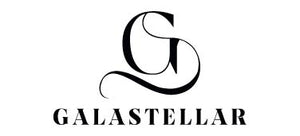











































































































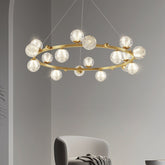

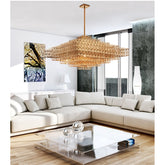

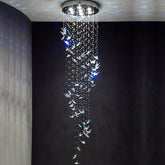

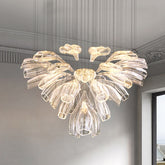

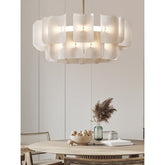

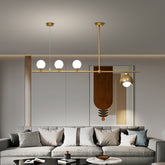

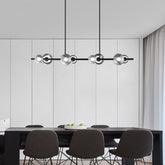

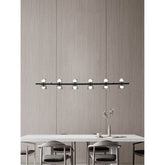

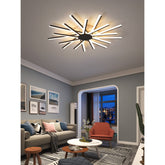

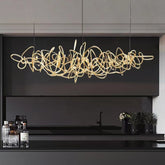


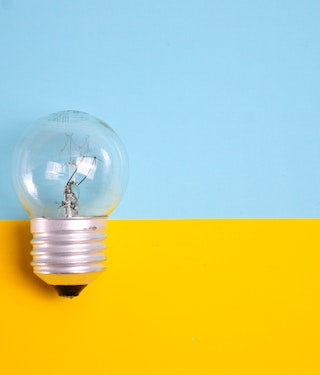

1 comment
3wy0nj